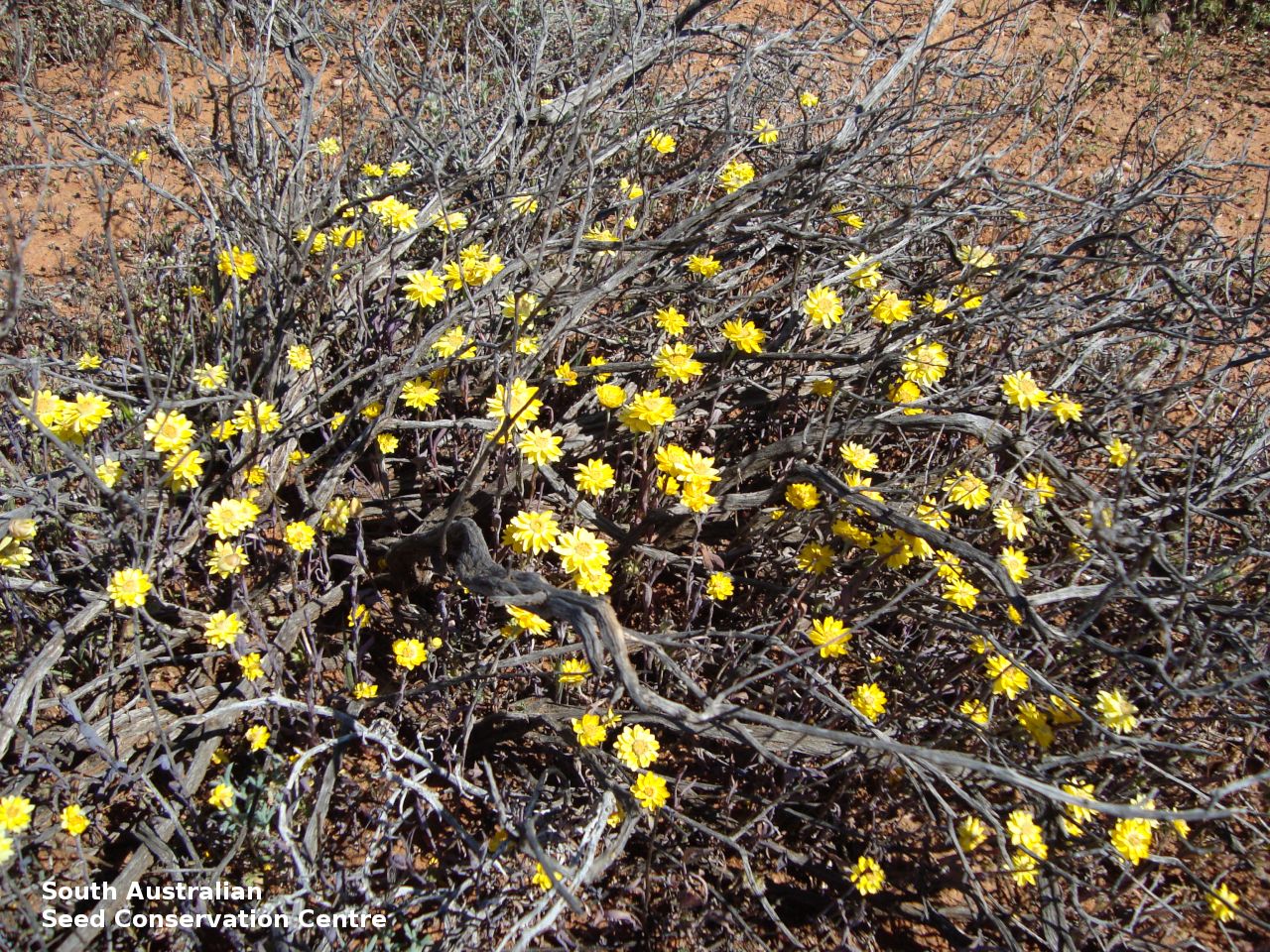
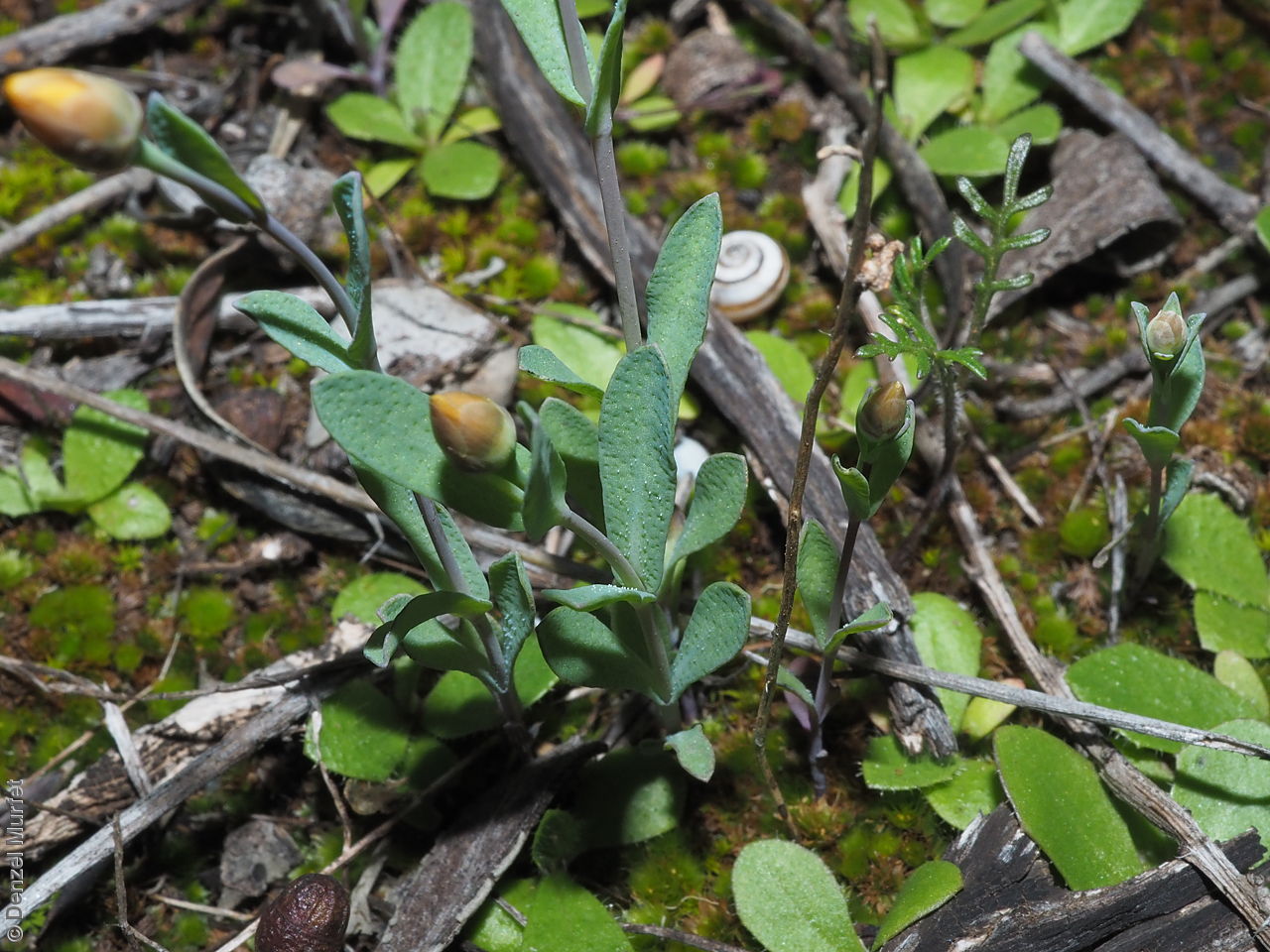
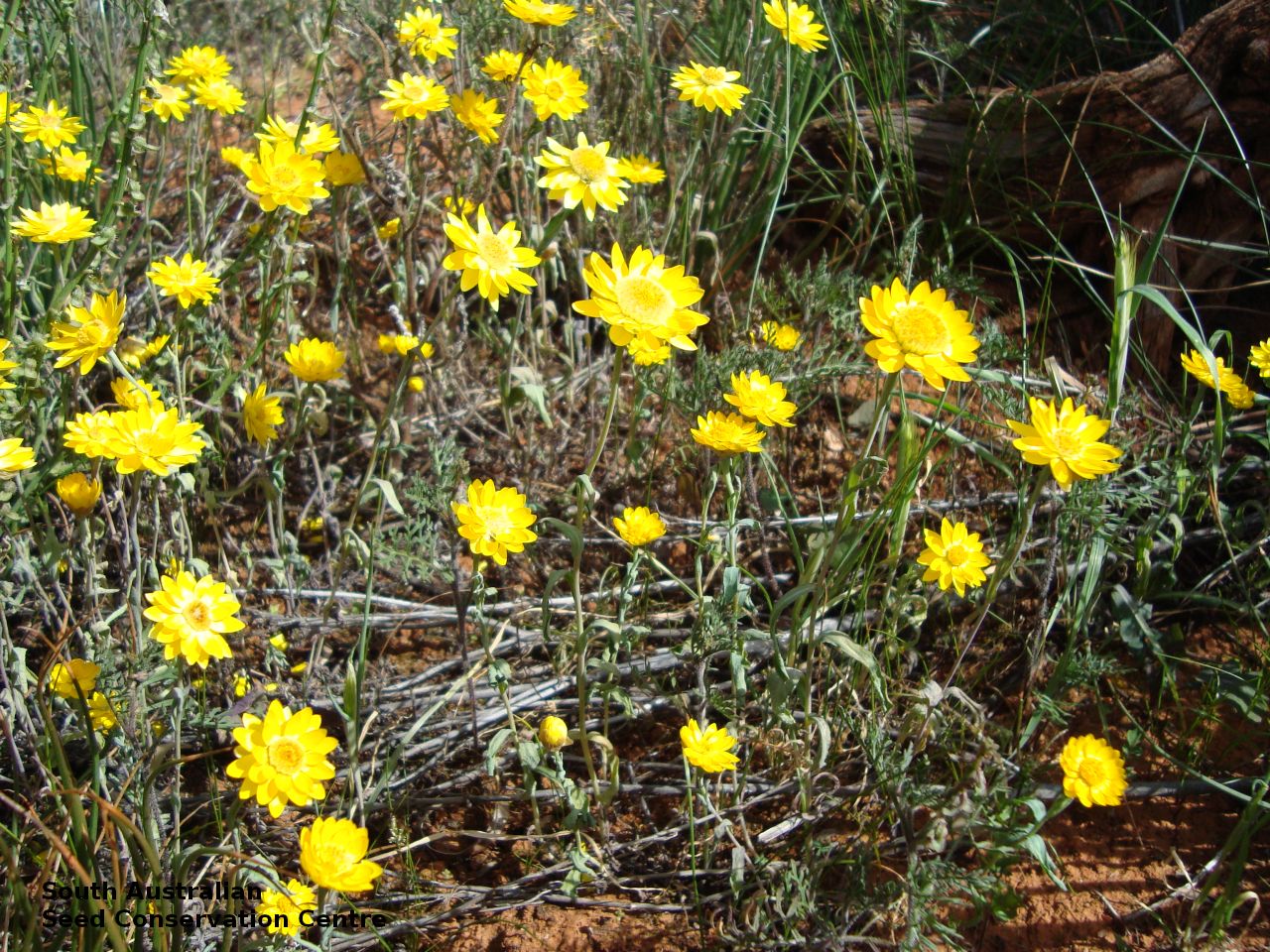
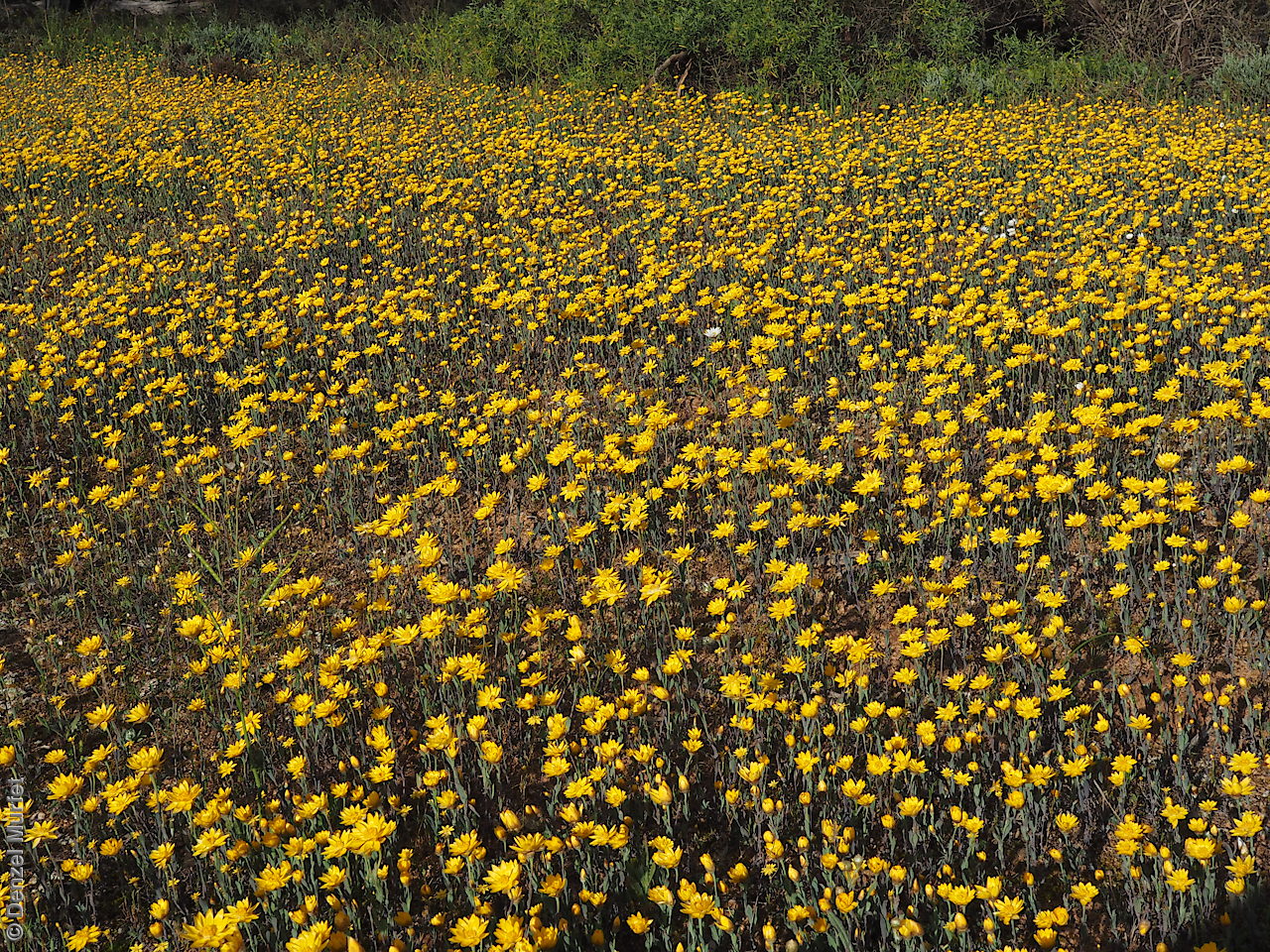
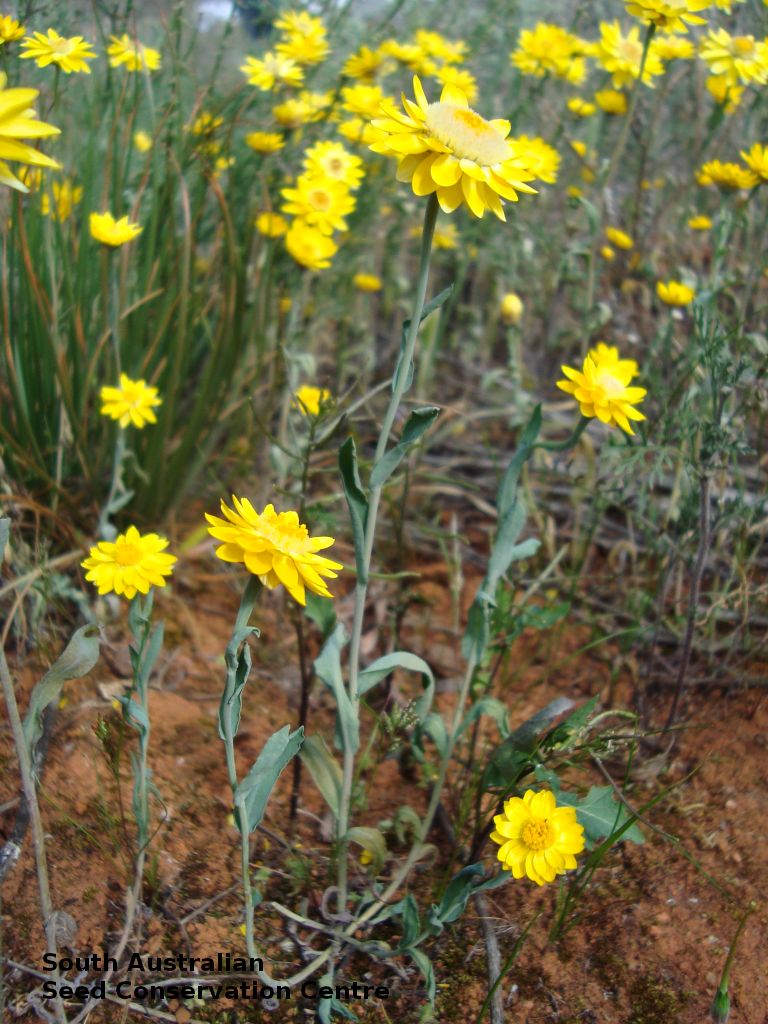
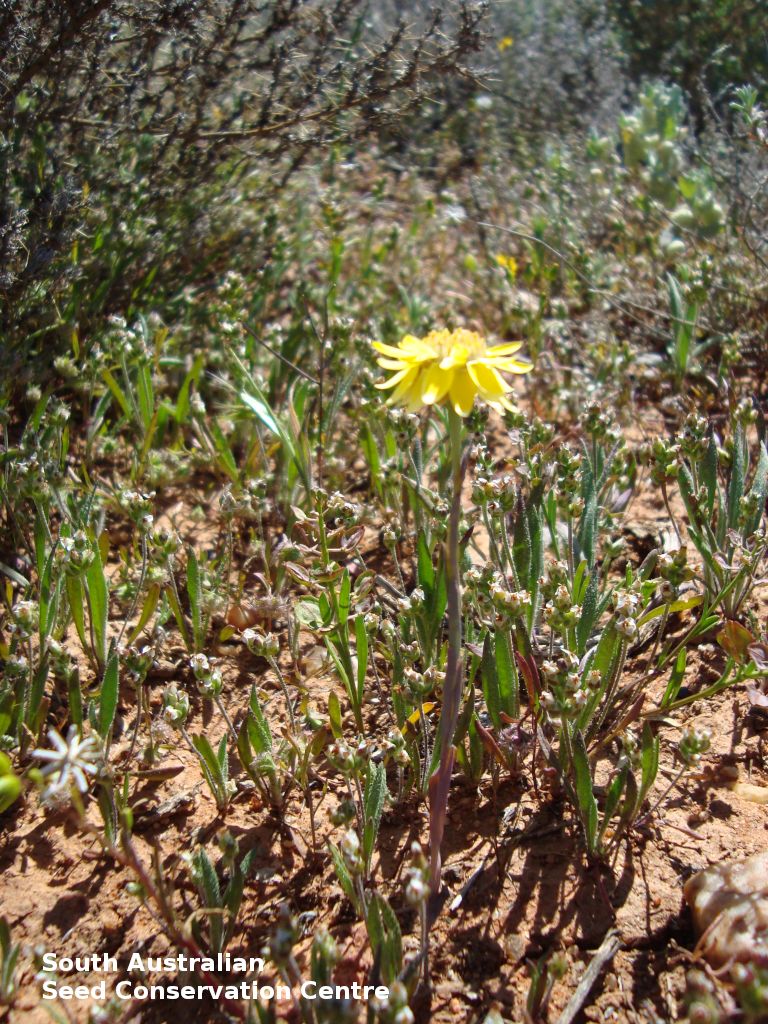
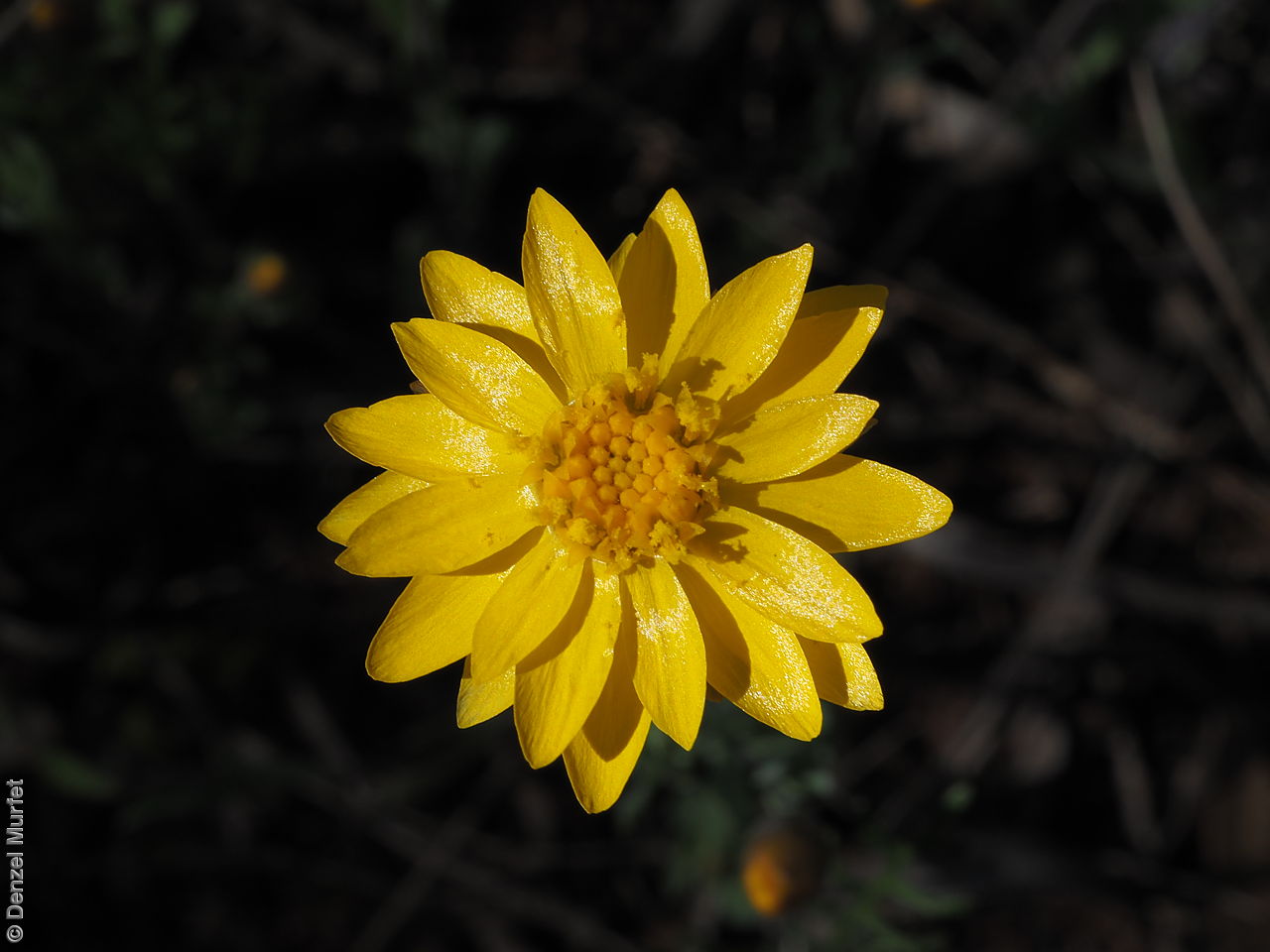
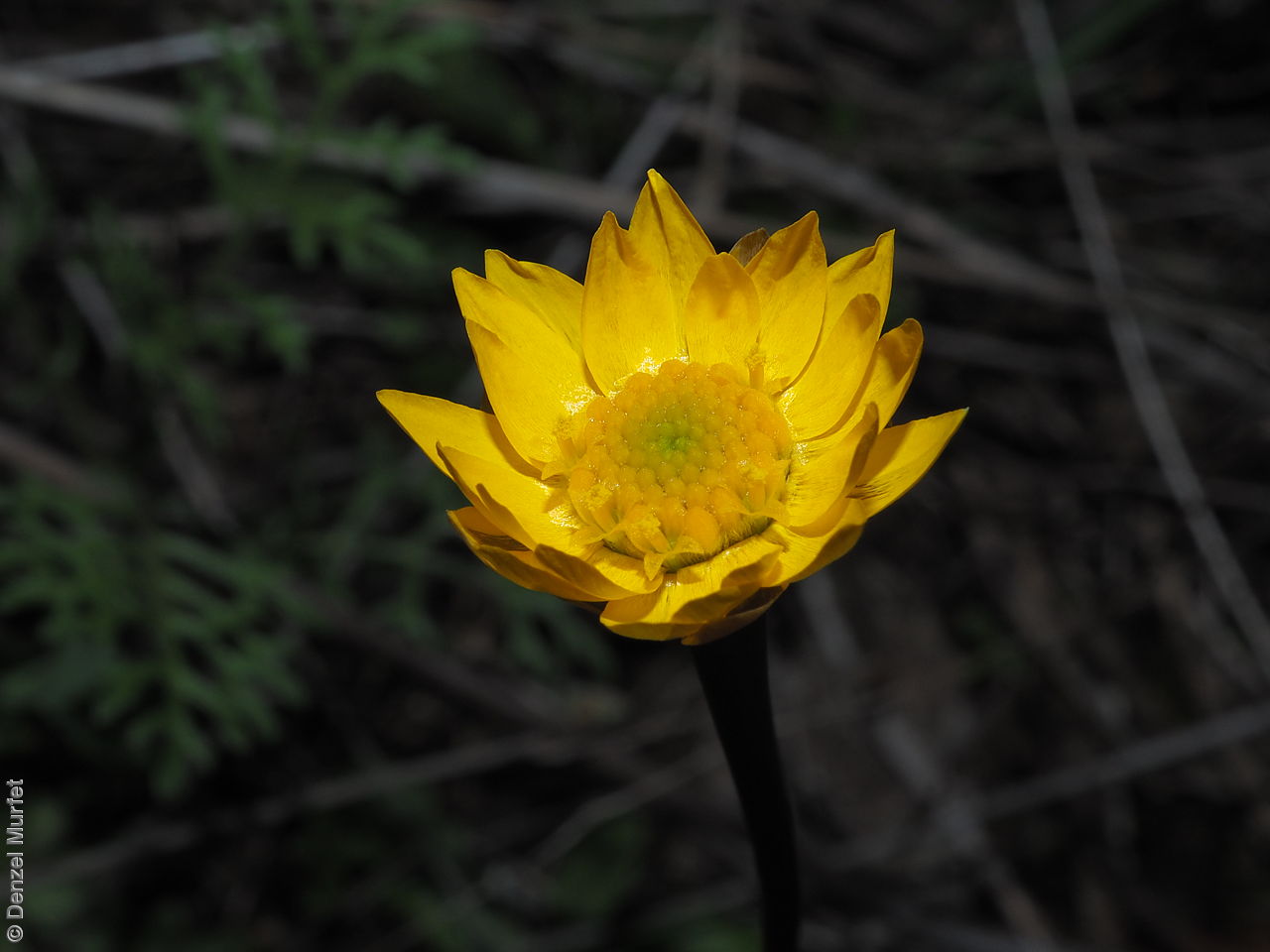
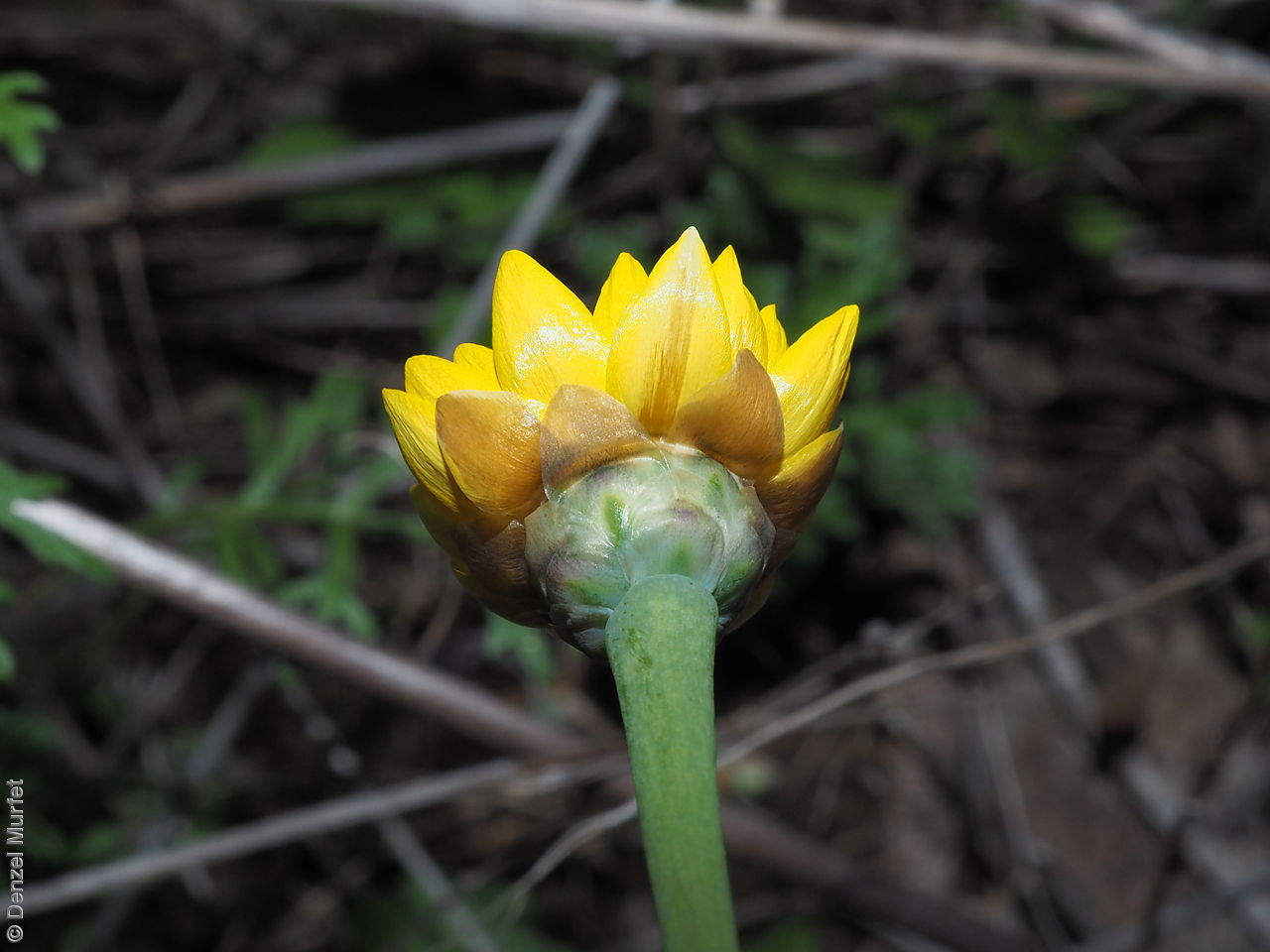
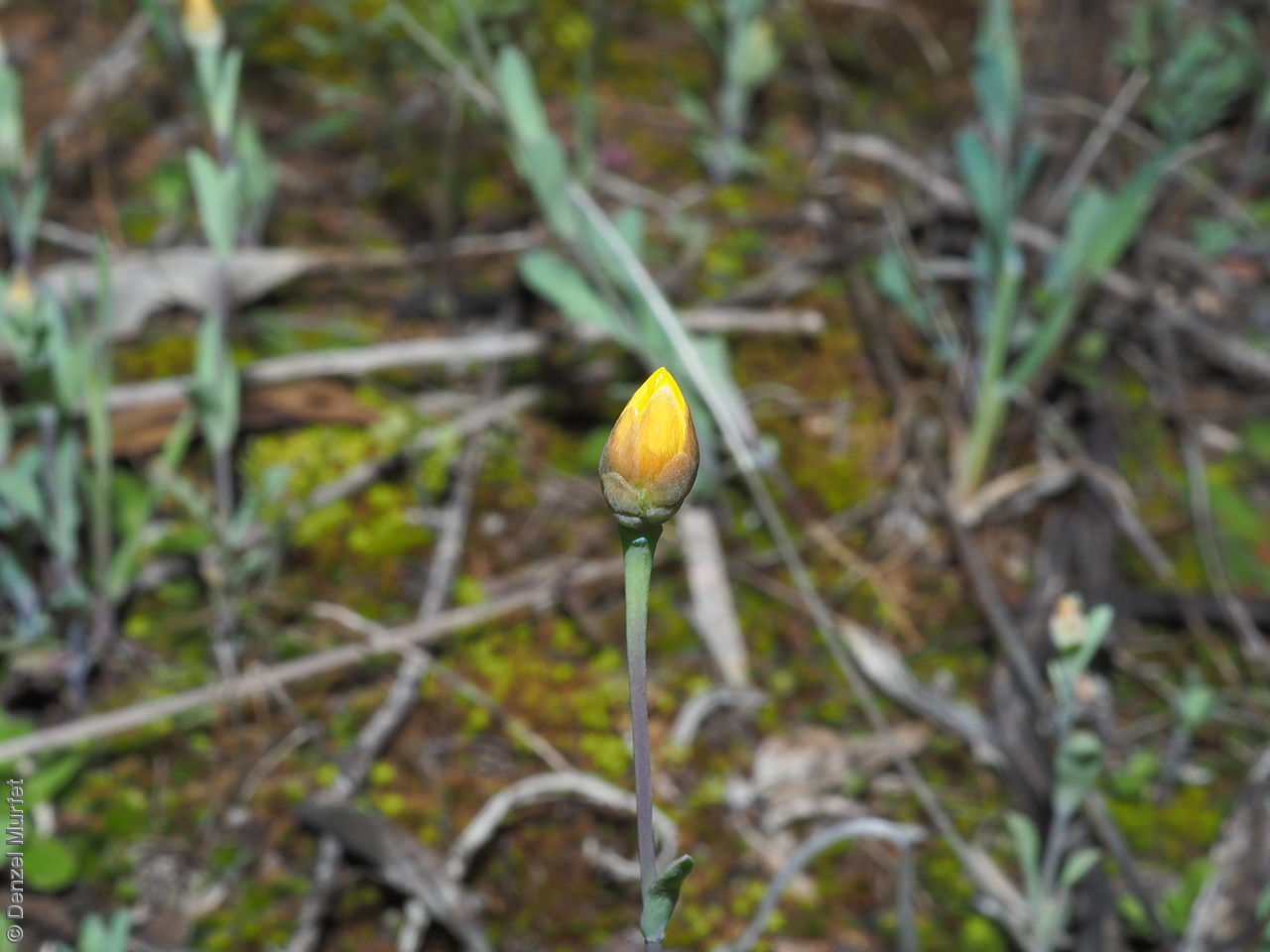
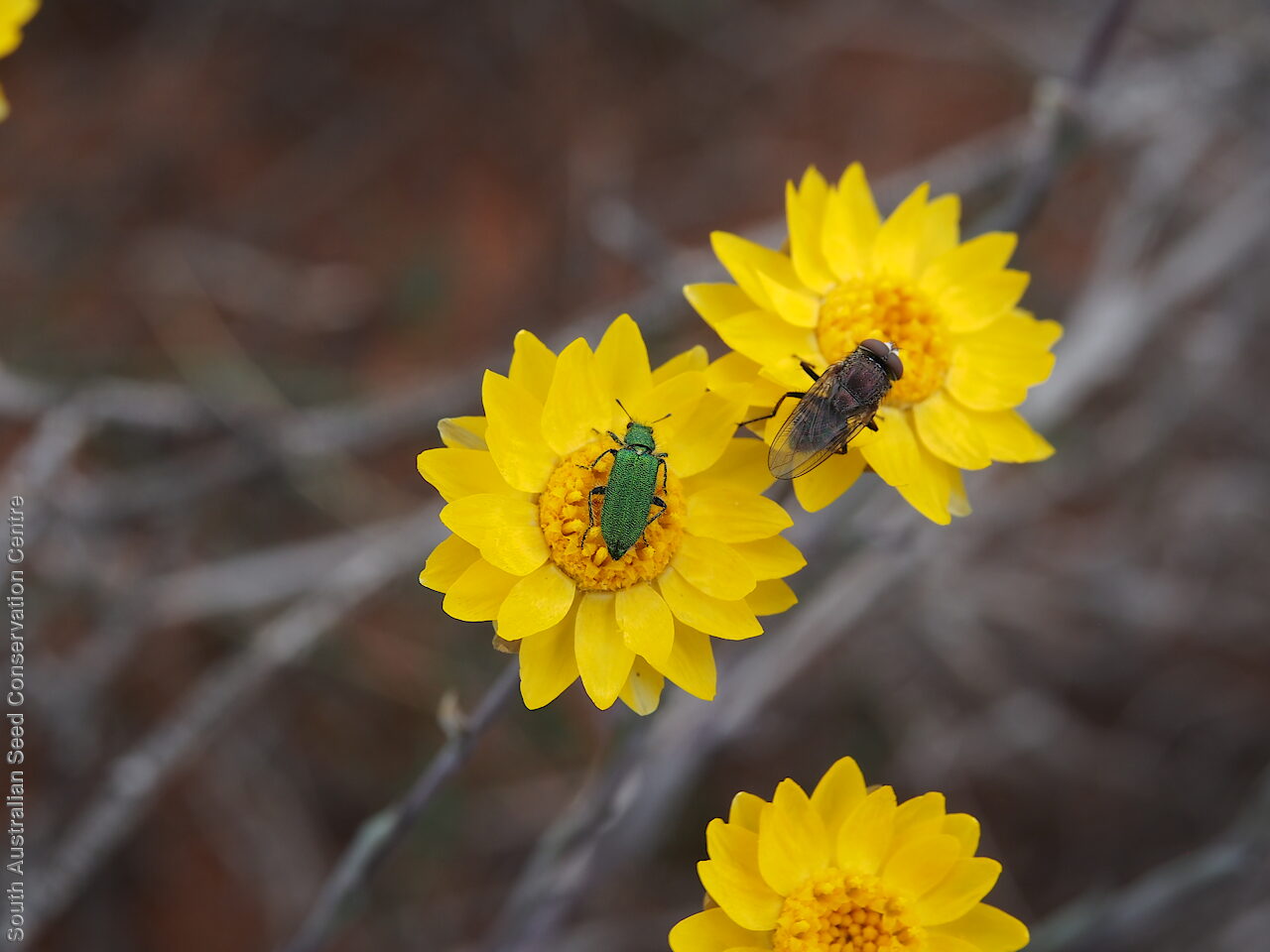
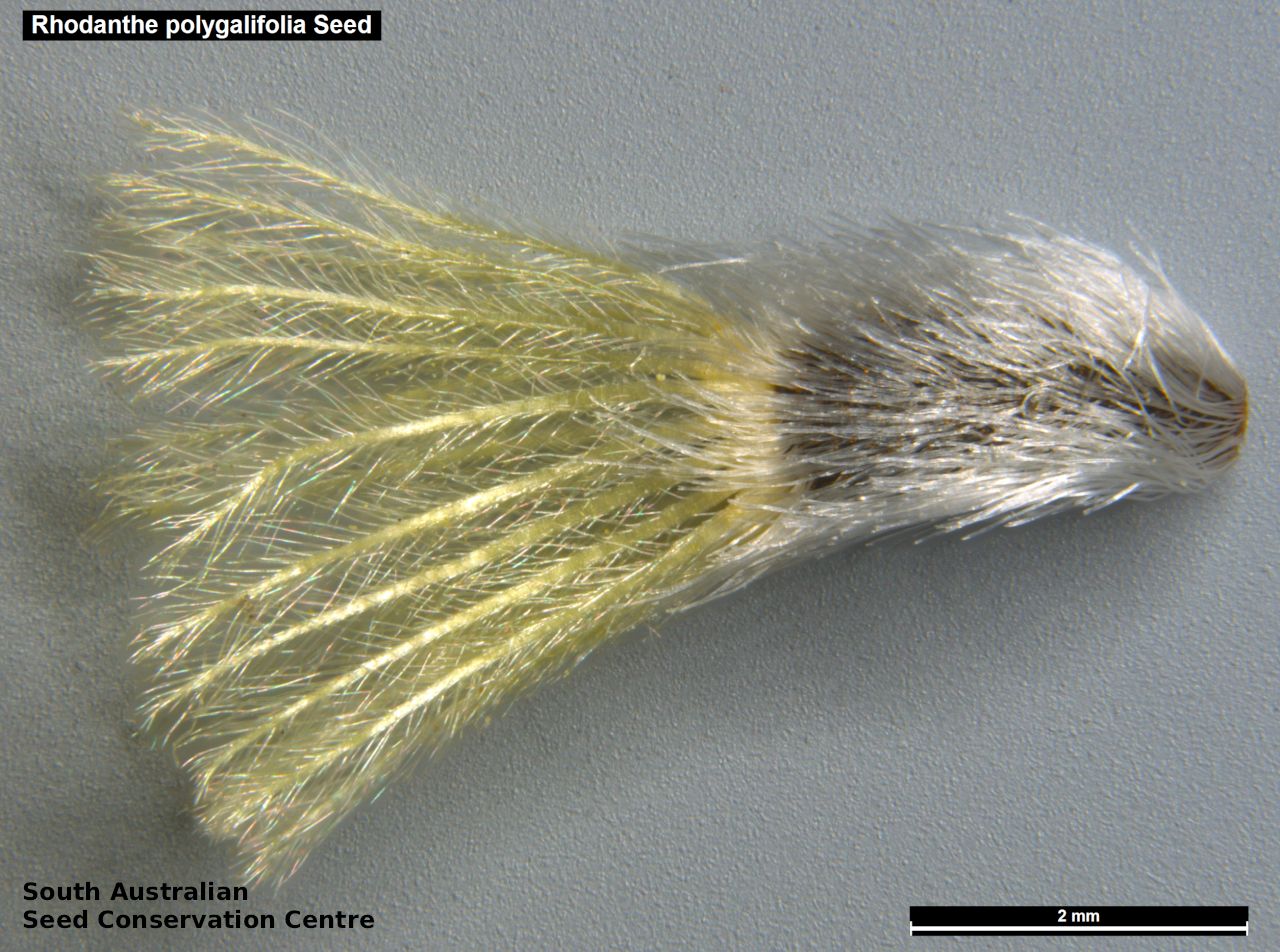
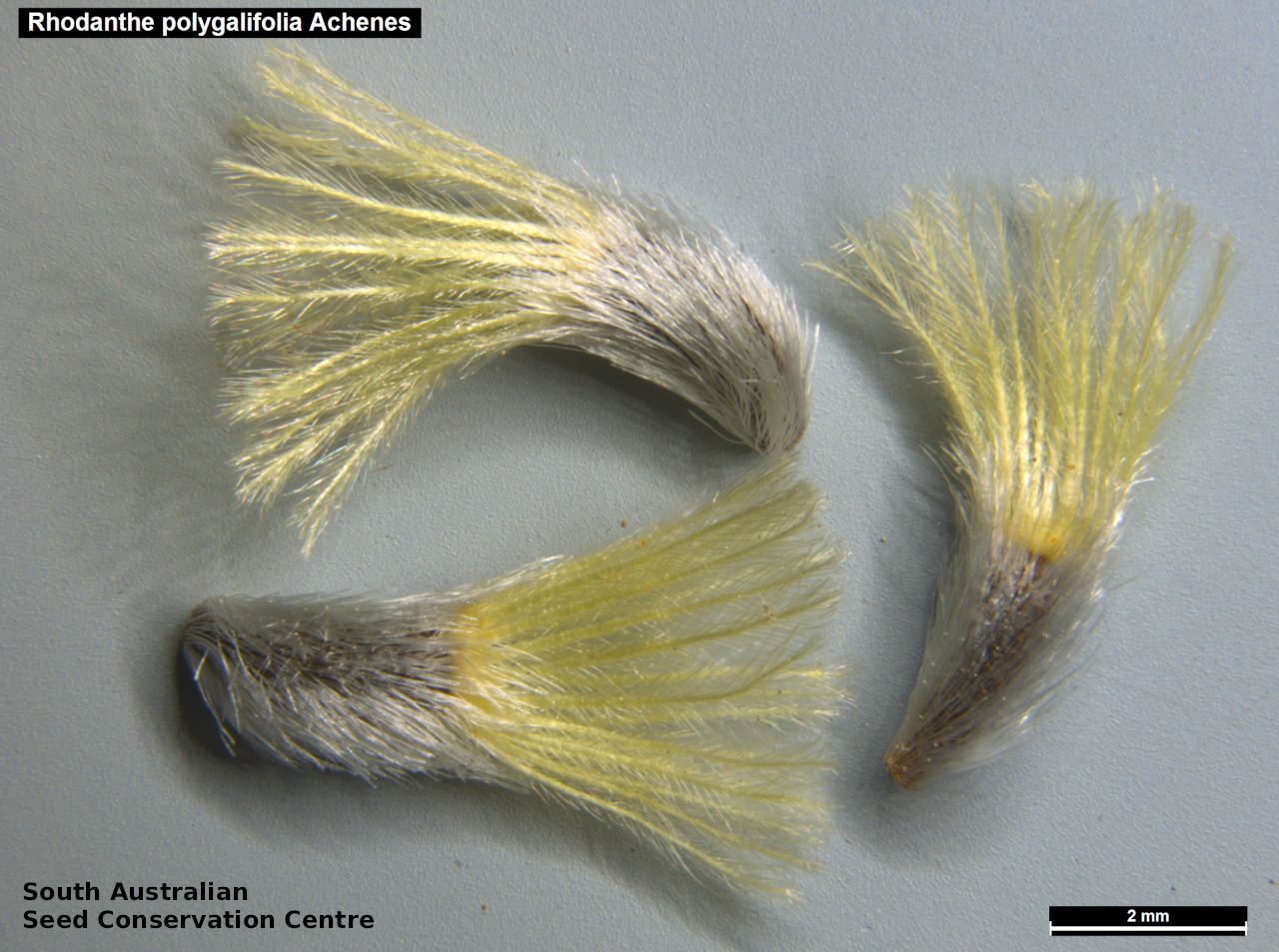

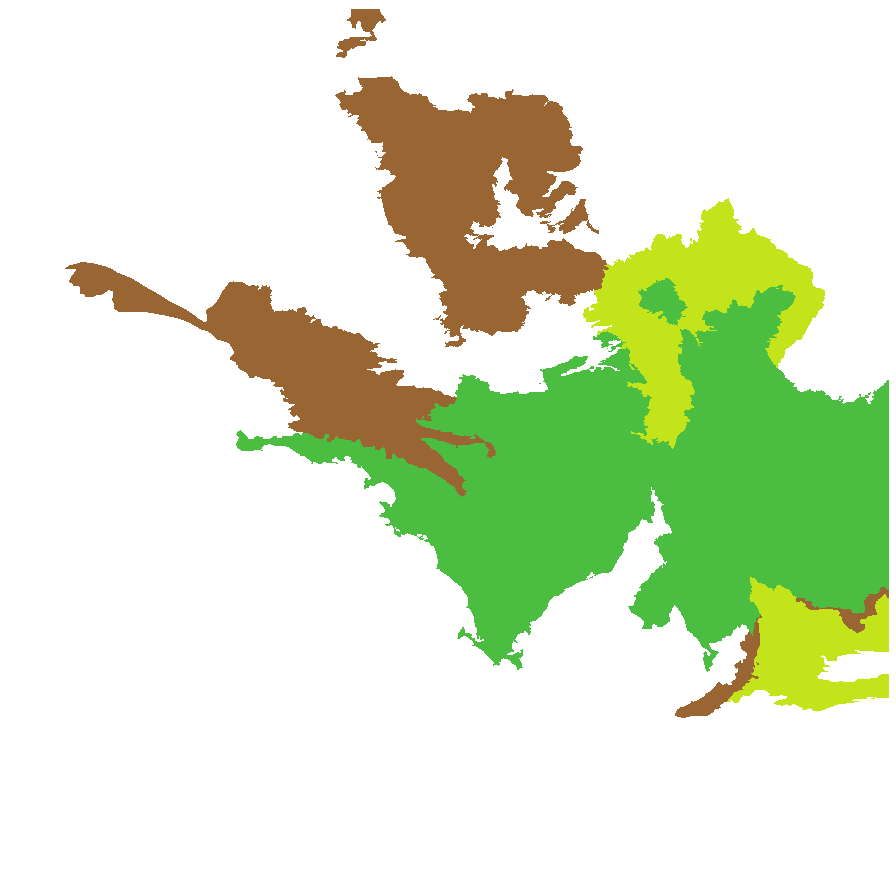
Botanical art
Prior names
Argyrocome polygalifolia
Helipterum polygalifolium
Common names
Brilliant Sunray
Milkwort Everlasting
Etymology
Rhodanthe from the Greek 'rhodon' meaning a rose and 'anthos' meaning a flower; referring to the rose-like flowers of Rhodanthe manglesii, the type for the genus. Polygalifolia means with leaves resembling those of the genus Polygala.
Distribution and status
Found in the central and eastern parts of South Australia, growing in a variety of habitats including mulga and bluebush communities on sandy to loamy soils. Also found in New South Wales and Victoria. Native. Common in South Australia. Rare in Victoria. Common in New South Wales.
Herbarium regions: North Western, Lake Eyre, Gairdner-Torrens, Flinders Ranges, Eastern, Eyre Peninsula, Northern Lofty, Murray
NRM regions: Alinytjara Wilurara, Eyre Peninsula, Northern and Yorke, South Australian Arid Lands, South Australian Murray-Darling Basin
AVH map: SA distribution map (external link)
Plant description
Erect to ascending annual herb to 30 cm high, stem brown, glabrous and branching at the base. Leaves absent below flower heads, narrow-oblong to 30 mm long and 3 mm wide, apex acute, upper surface with minute globose glands. Flowers solitary, terminal with yellow heads. Flowering between August and October. Fruits are golden globular daisy head. Seeds are brown ovoid seed to 3 mm long and 2 mm wide, covered in white hairs and long pappus. Seed embryo type is spatulate fully developed.
Seed collection and propagation
Collect seeds between October and December. Collect heads that are matured, those that are drying off, fat, turning a straw colour seeds and seeds come off easily if you pull it out with your fingers. Place the heads in a tray and leave to dry for a week. Then rub the heads gently by hand or with a rubber bung to dislodge the seeds. Use a sieve to separate the unwanted material. Store the seeds with a desiccant such as dried silica beads or dry rice, in an air tight container in a cool and dry place. From one collection, the seed viability was high, at 95%.
| Location | No. of seeds (weight grams) | Number of plants | Date collected | Collection number Collection location | Date stored | % Viability | Storage temperature |
|---|---|---|---|---|---|---|---|
| MSB | 2,200 (3.09 g) | 100+ | 16-Oct-2007 | MJT143 Eyre Peninsula | 95% |
Number of plants: This is the number of plants from which the seeds were collected.
Collection location: The Herbarium of South Australia's region name.
% Viability: Percentage of filled healthy seeds determined by a cut test or x-ray.